UPLC Columns Category
Waters Ultra-Performance Liquid Chromatography (UPLC) columns are a leap forward in liquid chromatography technology, offering an unparalleled enhancement in resolution, speed, and sensitivity for analytical scientists. These columns are meticulously engineered to provide superior pH stability, maximum retentivity, and improved peak shapes, for ultimate efficiency in chromatographic separations.
One of the standout features of Waters UPLC columns is their remarkable flexibility, which is designed to meet the varied requirements of modern laboratories. With over 200 possible combinations of column dimensions, configurations, and chemistries, along with four premium sub-2-μm particle technologies, Waters UPLC columns are versatile tools for a wide array of applications. These innovative particle technologies are at the heart of the UPLC columns' performance, enabling scientists to achieve sharper peaks and faster analyses without compromising on quality or efficiency.
Designed for routine use, these columns are tested and guaranteed to withstand pressures up to 18,000 psi, pushing the boundaries of what is achievable in liquid chromatography. This capability allows for the use of longer columns with finer particles, drastically increasing the resolving power of the chromatographic system. The result is a significant reduction in analysis time and an increase in throughput without sacrificing the quality of the analytical data.
Whether for pharmaceuticals, environmental monitoring, food safety, or biochemical research, Waters UPLC columns provide the robustness, reliability, and performance needed to tackle the most challenging separations, making them an essential tool for laboratories striving for analytical excellence.
UPLC Columns FAQs
What is the difference between UPLC and HPLC columns?
UPLC (UltraPerformance Liquid Chromatography) columns differ from traditional HPLC columns primarily in particle size and system compatibility. UPLC columns use sub-2-μm particles, which provide significantly higher resolution, sensitivity, and speed compared to the 3–5 μm particles commonly used in HPLC columns. This smaller particle size enables more efficient separations, allowing for faster run times and reduced solvent consumption. However, UPLC columns require specialized instrumentation capable of operating at higher pressures, typically up to 15,000 psi, while HPLC systems are usually limited to around 6,000 psi.
Waters UPLC columns are engineered to work seamlessly with ACQUITY UPLC systems and related high-pressure platforms, delivering robust and reproducible performance for demanding analytical workflows. The improvements in throughput and data quality make UPLC an ideal choice for high-resolution separations and complex sample matrices.
How often should I replace my UPLC column?
The lifespan of a UPLC column depends on several factors, including sample type, mobile phase composition, flow rate, and overall usage. Under proper conditions and with routine maintenance, a UPLC column can often support hundreds to thousands of injections. However, columns should be replaced when key performance indicators (such as resolution, retention time reproducibility, or peak shape) begin to deteriorate beyond acceptable limits. Increased backpressure, persistent peak tailing, or significant loss of sensitivity may also indicate that the column is nearing the end of its usable life.
Regular system suitability testing can help track performance trends over time. Using guard columns or in-line filters can extend column life by protecting against particulates and contaminants. Ultimately, replacement frequency will vary by application, but monitoring analytical performance and maintaining a cleaning schedule are the most reliable ways to determine when replacement is necessary.

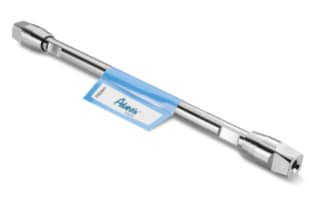 Discover Atlantis Premier Columns for high-performance liquid chromatography, designed to improve peak shape while mitigating unwanted interactions.
Discover Atlantis Premier Columns for high-performance liquid chromatography, designed to improve peak shape while mitigating unwanted interactions.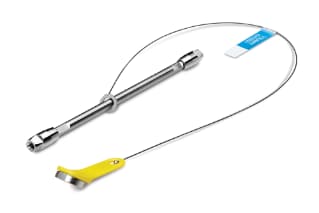 Eliminate doubt in UPLC, UHPLC, and HPLC analysis applications with CORTECS Premier Columns, designed to increase sample throughput while providing reproducible data for all analytes.
Eliminate doubt in UPLC, UHPLC, and HPLC analysis applications with CORTECS Premier Columns, designed to increase sample throughput while providing reproducible data for all analytes.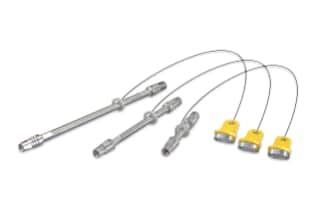 Discover how to achieve increases in LC efficiency, resolution, sensitivity, accuracy, speed, and reliability with ACQUITY sub-2-μm UPLC particle columns.
Discover how to achieve increases in LC efficiency, resolution, sensitivity, accuracy, speed, and reliability with ACQUITY sub-2-μm UPLC particle columns. Maximize resolution and peak capacity for LC separations with CORTECS solid-core columns in 1.6 and 2.7 µm across 7 column chemistries.
Maximize resolution and peak capacity for LC separations with CORTECS solid-core columns in 1.6 and 2.7 µm across 7 column chemistries.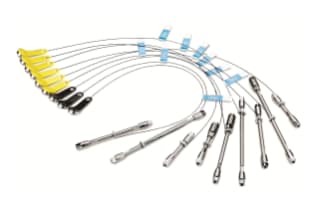 Achieve increases in sensitivity and analyte recovery while reducing column passivation time and mitigating unwanted analyte/surface interactions with ACQUITY Premier Columns.
Achieve increases in sensitivity and analyte recovery while reducing column passivation time and mitigating unwanted analyte/surface interactions with ACQUITY Premier Columns.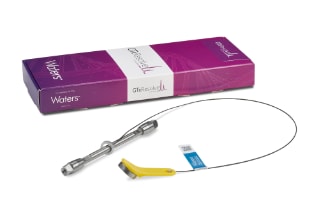 Develop high resolution, ion-pairing free analysis methods for synthetic oligonucleotides, digested nucleic acids, and capsid proteins with GTxResolve Premier BEH Amide Columns.
Develop high resolution, ion-pairing free analysis methods for synthetic oligonucleotides, digested nucleic acids, and capsid proteins with GTxResolve Premier BEH Amide Columns.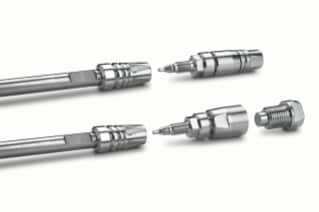 Safeguard analytical HPLC, UHPLC, and UPLC columns from the effects of damaging particulates and chemical contaminates with VanGuard Cartridges and Pre-columns.
Safeguard analytical HPLC, UHPLC, and UPLC columns from the effects of damaging particulates and chemical contaminates with VanGuard Cartridges and Pre-columns.